Last month, heavy rains brought by Typhoon Gaemi flooded dozens of neighborhoods in southwestern Taiwan — but things could have been much worse.
Several locations saw total precipitation exceeding that recorded 15 years ago during Typhoon Morakot, yet the resulting floods weren’t nearly so extensive. According to a July 29 report in the United Daily News (UDN), the affected area in Kaohsiung was less than a tenth of that in the 2009 calamity. And instead of being inundated for days, in most places the mud-colored water receded after just a few hours.
Keen to put a positive spin on their response to the deluge, the Kaohsiung City Government was quick to highlight how flood storage and other municipal infrastructure had mitigated the disaster.
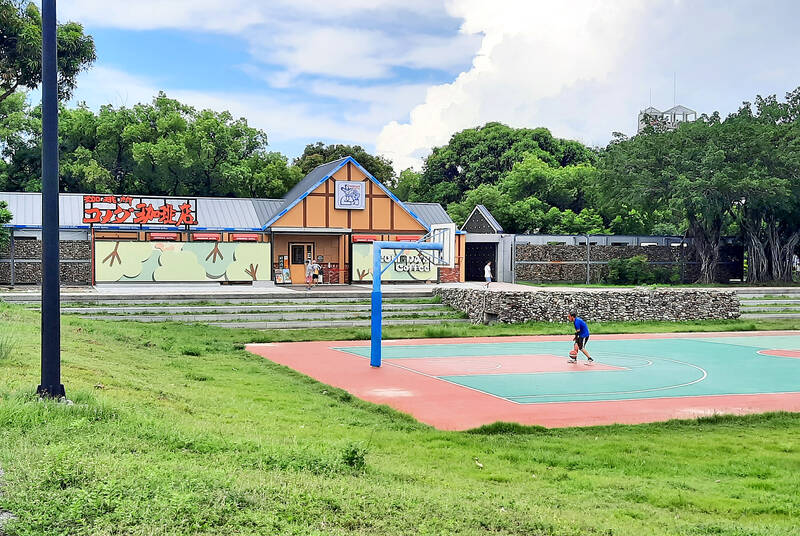
Photo: Steven Crook
At the time of Morakot, the city had just one flood detention pond, a 110,000-cubic-meter basin in Sanmin District (三民). Kaohsiung now has 25 such ponds, 10 of which were completed in the last six years. In some cases, the authorities had to overcome opposition from residents who feared that having a detention basin nearby might increase the risk of their homes being flooded.
The Tainan section of Southern Taiwan Science Park (南部科學園區) came through Gaemi unscathed, but that was no consolation for some of those living nearby. While the park administration hailed the success of the industrial zone’s flood detention system, the borough warden of Shyjhongrong (許中營) told the China Times (July 26) that the high foundations of the park’s semiconductor fabs and optoelectronics factories had turned his own low-lying community into another detention pond.
MAJOR INVESTMENTS
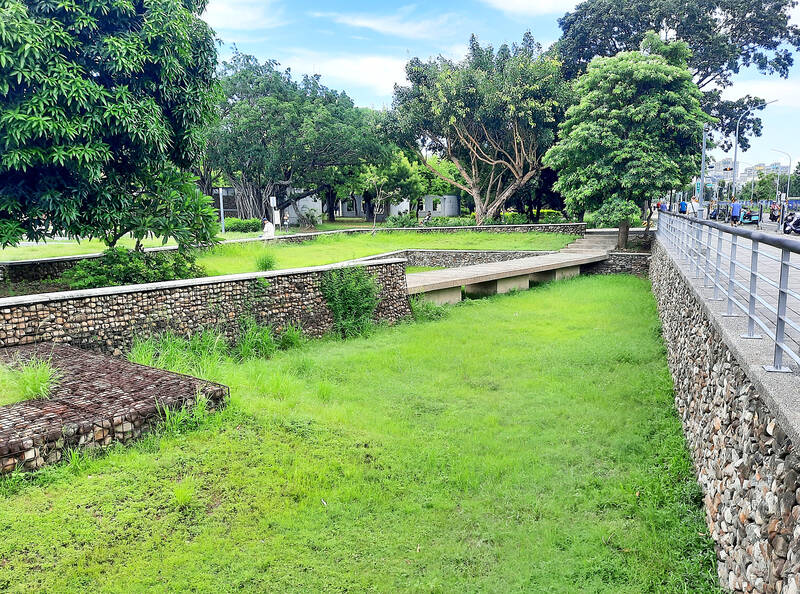
Photo: Steven Crook
Kaohsiung’s flood detention ponds vary greatly in land area and capacity, with three of the largest being close to Dianbao Creek (典寶溪) in Ciaotou (橋頭) and Gangshan (岡山) districts. Together, they can hold up to 4.98 million cubic meters of water, greatly reducing the pressure on the city’s drains and waterways.
Such facilities also serve as parks and ameliorate urban heat, but they don’t come cheap. To complete one of the Dianbao Creek projects, the authorities spent NT$1.7 billion on acquiring land and a further NT$134.56 million on construction.
The UDN article quoted Yu Pao-shan (游保杉), an emeritus professor in National Cheng Kung University’s Department of Hydraulic and Ocean Engineering, as saying that Kaohsiung’s water-control infrastructure appears to have functioned as planned.
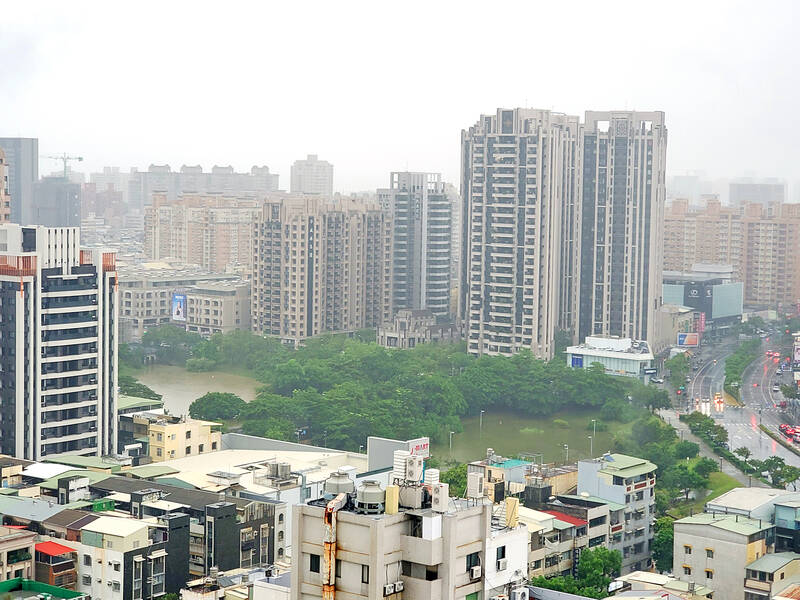
Photo: Chen Wen-chan, Liberty Times
Yu warned, however, that climate change may well cause even heavier rainfall in the future, and that this is an issue that Taiwan must face. Because precipitation is likely to exceed the current infrastructure’s design standards, he called on central and local governments, along with vulnerable communities, to jointly devise disaster-prevention strategies.
Like Yu, Liao Kuei-hsien (廖桂賢), director of the Taiwan Rivers Network, an NGO that works to promote the protection and restoration of river health, understands that Kaohsiung’s flood detention basins worked as intended. She responds to those who complain that the billions spent on them was wasted by saying that, even when precipitation is as extreme as during Gaemi, and even if future urban development increases overall flood risk, properly-maintained basins should still be able to hold back the amount of floodwater they were designed to detain.
“People need to understand that without human development, flooding is a natural phenomena,” says Liao, who’s also a professor in National Taipei University’s Graduate Institute of Urban Planning. When humans choose to develop an area that’s naturally flood-prone, rather than think flooding is abnormal, they should understand that artificial control, be it by flood detention basins or other hard infrastructure, is inevitably limited by its design standards, she says.

Photo: Lee Hui-chou, Taipei Times
Floating cars and submerged orchards make for compelling television, so it’s hardly surprising the media paid little attention to a village in Yunlin County that was spared the worst.
‘LOCALIZED FLOOD DETENTION’
Youcai (有才) in Baojhong Township (褒忠鄉) — a low-lying agricultural community susceptible to flooding — avoided serious problems during Gaemi as a result of what the Ministry of Economic Affairs’ Water Resources Agency calls “localized flood detention” (在地滯洪).
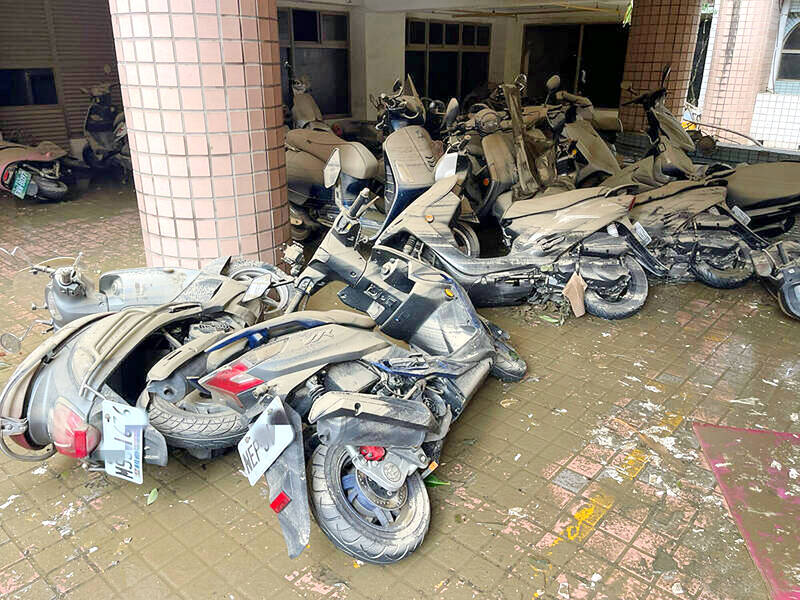
Photo: Taipei Times file
When sensors alerted the authorities to dangerously-high water levels, sluice gates were opened, releasing water onto farmland owned by Taiwan Sugar Corp (Taisugar). This second line of defense protected local homes from inundation. However, it’s an approach that requires more space than might be available in densely populated parts of Kaohsiung or Tainan.
Liao is among those who were impressed by the effectiveness of this solution, which creates detention capacity without extensively changing the landscape.
She says flood-prone cities and counties should create more space for water: “This includes, but shouldn’t be limited to, building more flood detention areas which aren’t conventional flood detention basins.”
Low-lying land should have more than one purpose, she argues. It can be farmland or parkland for most of the year, but ready to detain floodwater when needed.
“I think it’s especially important to incentivize farmers to allow their fallow fields to serve as flood detention areas during the typhoon season. Sufficient incentives could overcome the misconception that rainwater detention could ruin their farmland,” Liao says.
At the same time, Liao says Taiwan should embrace a different approach, one she has long championed. Rather than build even more flood-control infrastructure, she believes, the authorities should invest in making communities more floodable and flood-resilient, so that even if flooding occurs, there’s no significant damage or disruption.
Liao admits that this will be difficult, as Taiwan relies too much on hard infrastructure and people expect the government to invest in it.
“The entire system is designed around maintaining and adding flood control infrastructure,” she says, pointing out that such policies help politicians garner votes.
Liao doesn’t expect Typhoon Gaemi to lead to a change in thinking.
“It wasn’t ‘serious enough,’ in that it was mostly rural people who really suffered,” she says. “I think it’d take Taipei City being under deep water before mindsets change.”
Steven Crook, the author or co-author of four books about Taiwan, has been following environmental issues since he arrived in the country in 1991. He drives a hybrid and carries his own chopsticks. The views expressed here are his own.

On the final approach to Lanshan Workstation (嵐山工作站), logging trains crossed one last gully over a dramatic double bridge, taking the left line to enter the locomotive shed or the right line to continue straight through, heading deeper into the Central Mountains. Today, hikers have to scramble down a steep slope into this gully and pass underneath the rails, still hanging eerily in the air even after the bridge’s supports collapsed long ago. It is the final — but not the most dangerous — challenge of a tough two-day hike in. Back when logging was still underway, it was a quick,
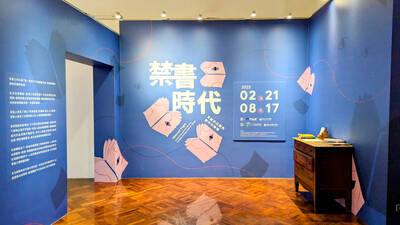
From censoring “poisonous books” to banning “poisonous languages,” the Chinese Nationalist Party (KMT) tried hard to stamp out anything that might conflict with its agenda during its almost 40 years of martial law. To mark 228 Peace Memorial Day, which commemorates the anti-government uprising in 1947, which was violently suppressed, I visited two exhibitions detailing censorship in Taiwan: “Silenced Pages” (禁書時代) at the National 228 Memorial Museum and “Mandarin Monopoly?!” (請說國語) at the National Human Rights Museum. In both cases, the authorities framed their targets as “evils that would threaten social mores, national stability and their anti-communist cause, justifying their actions

In the run-up to World War II, Admiral Wilhelm Canaris, head of Abwehr, Nazi Germany’s military intelligence service, began to fear that Hitler would launch a war Germany could not win. Deeply disappointed by the sell-out of the Munich Agreement in 1938, Canaris conducted several clandestine operations that were aimed at getting the UK to wake up, invest in defense and actively support the nations Hitler planned to invade. For example, the “Dutch war scare” of January 1939 saw fake intelligence leaked to the British that suggested that Germany was planning to invade the Netherlands in February and acquire airfields

Taiwanese chip-making giant Taiwan Semiconductor Manufacturing Co (TSMC) plans to invest a whopping US$100 billion in the US, after US President Donald Trump threatened to slap tariffs on overseas-made chips. TSMC is the world’s biggest maker of the critical technology that has become the lifeblood of the global economy. This week’s announcement takes the total amount TSMC has pledged to invest in the US to US$165 billion, which the company says is the “largest single foreign direct investment in US history.” It follows Trump’s accusations that Taiwan stole the US chip industry and his threats to impose tariffs of up to 100 percent